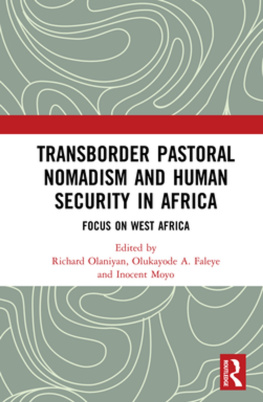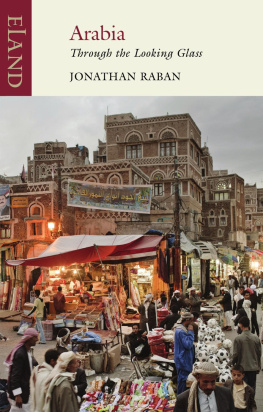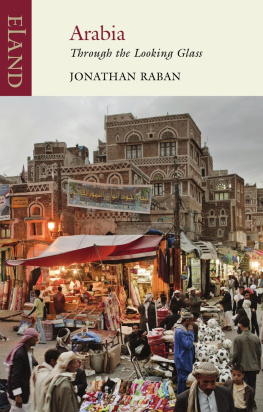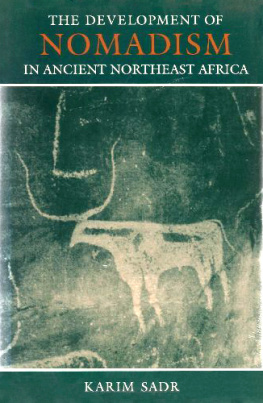In memory of Giora, my brother
First published 1997 by Westview Press
Published 2019 by Routledge
52 Vanderbilt Avenue, New York, NY 10017
2 Park Square, Milton Park, Abingdon, Oxon OX14 4RN
Routledge is an imprint of the Taylor & Francis Group, an informa business
Copyright 1997 by Taylor & Francis
All rights reserved. No part of this book may be reprinted or reproduced or utilised in any form or by any electronic, mechanical, or other means, now known or hereafter invented, including photocopying and recording, or in any information storage or retrieval system, without permission in writing from the publishers.
Notice:
Product or corporate names may be trademarks or registered trademarks, and are used only for identification and explanation without intent to infringe.
Meir, Avinoam.
As nomadism ends : the Israeli bedouin of the Negev / by Avinoam Meir.
p. cm.
Includes bibliographical references and index.
1. BedouinsIsraelNegevSedentarisation. 2. Negev (Israel)Ethnic
relations. I. Title.
DS110.N4M38 1997
305.892705 6949DC 20
96-11295
CIP
Typesetting by WordByte, P.O.B. 3102, Beer-Sheva, Israel
ISBN 13: 978-0-367-01067-6 (hbk)
In the summer of 1971, a young Israeli military reserve officer was assigned for several weeks to southern Sinai. His orders were to conduct routine patrols of Bedouin territory there. During one of the patrols, the squad encountered a jeep with two people aboardan elderly Bedouin man, escorted by a young one. They were equipped with a jerrycan which carried an official Israeli military emblem. The patrol officer, suspecting that the jerrycan had been stolen from an army base, confiscated it and went away assured that he had taken the most appropriate action. Several days later the officer received a furious telephone call from the Israeli military governor of southern Sinai. It turned out that not only had the two Bedouin been deeply humiliated by the suspicion cast on them, but that the elder man was the Chief Sheikh of southern Sinai. The young officer was accused of causing a great scandal and severely damaging the delicate fabric of relationships with the Sinai Bedouin, established by the military authorities with considerable effort during four years of occupation. In order to pacify the sheikh, the officer was ordered to contact him at once, apologize, and organize a soulha (a customary Bedouin ceremony of conciliation).
The soulha took place several days later at a neutral location. The Chief Sheikh was apparently conciliated, things returned to normal, but the young and over-enthusiastic officer had learned a vivid lesson in intercultural relationships. That reserve officer, then an undergraduate geography student, is now the author of this book. Perhaps that embarrassing first encounter with Bedouin culture may explain why, about twelve years later, when on the faculty of a university situated in the heart of the Bedouin community in the Negev, I became involved in what turned out to be long-range research on this society in particular and pastoral nomadic societies in general.
My interest in the Negev Bedouin grew out of my broader interest in processes of change. More specifically, it originated in my dissatisfaction with the framework of spatial diffusion dynamics, my previous scientific specialty, which I tried unsuccessfully to apply to Bedouin society. I realized then the complexity and uniqueness of this society and grasped that a far deeper social understanding of pastoral nomadic societies and the Bedouin community was required. This resulted in my growing engagement in field research on various social, economic, and political issues viewed from a geographical perspective that are related to processes of change among the pastoral nomadic Bedouin.
As time went on, and the more I studied and wrote about the Bedouin, the greater my realization grew of the depth of change in this society but also, most important, of the subsequent high level of stress it has generated among these people. Later on it became apparent to me that despite the highly unique Israeli sociopolitical and cultural context of the Negev Bedouin, there are similarities with pastoral nomads undergoing processes of change elsewhere. These similarities stem primarily from a recurrent pattern of considerably narrowed pastoral options of survival left for such societies by state governments. They are related particularly to the ending of pastoral nomadism and the subsequent sociospatial processes. My identification of these similarities was the main impetus for writing this book. In it I have attempted therefore to put together these similar dimensions into a conceptual framework, in light of which I examine processes of sociospatial change within the Negev Bedouin society as nomadism ends.
Some of the processes examined within this framework are based on new perspectives that emerged during work on this book. Others are a product of my previous independent and collaborative published research. Here I owe special and deep gratitude to my dear friend and colleague, geographer-anthropologist Yosef Ben-David, with whom I have been collaborating for almost a decade. His long involvement in research on the Bedouin, his profound and penetrating familiarity with this society, and his readiness to guide me along the intricate pathways of Bedouin society have been indispensable to my own understanding of the issues at stake and to the development of my research in this field. I hope my own ideas and insights on Bedouin and pastoral nomadic issues have been, in their turn, of some use to him.
Many other friends and colleagues have also contributed to my research in this field and to the writing of this book. First and foremost, David Grossmanwith whom I collaborated in writing on the Israeli Arabs in generalprovided me with many geographical insights in studying the Bedouin and writing several chapters in this book. Gideon Kressel and Emanuel Marx have also enlightened me through their own writings and many discussions from the anthropological perspective. Special thanks are due to Salman Al-Aassem and Aref Abu-Rabia, my Bedouin colleagues, who often illuminated situations and issues that had initially seemed simple to me as an outsider. The various graduate and undergraduate students who participated in my seminars have also conducted research and provided valuable ideas for this book. Yet, responsibility for the interpretations of all these ideas and insights is of course mine.
I owe much to Aharon Kellerman, whose advice and moral support during the writing of the book is greatly appreciated. Yehuda Gradus, Oren Yiftachel, Eli Stem, Shaul Krakover, Harvey Lithwick, Devora Shemer, and Jon Ansonall colleagues in the Department of Geography and Environmental Development and other departments at Ben-Gurion University of the Negevhave always been around when I needed them for advice and assistance. Technical assistance was also always available from Gideon Berman and Danny Aufgang, and my appreciation is due to Pieter Louppen, who patiently and meticulously produced the graphics of this book. Thanks are also due to Chaya Galai for the editorial work. Dov Bamea, Moshe Shochat, and Eli Yifrach from the regional offices of the Ministries of Education and the Interior provided highly valuable data in their respective fields. The financial support provided by the Negev Center for Regional Development and the School of Social Sciences and Humanities at Ben-Gurion University of the Negev is greatly appreciated. I would also like to thank Magness Press, the Institute of British Geographers, the Journal of Comparative Family Studies , and The Gerontologist for their permission to reproduce copyrighted material.







